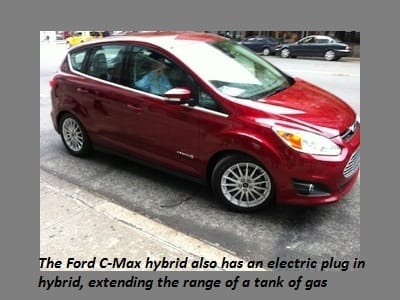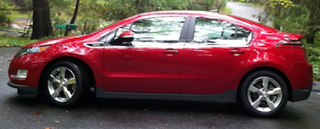Hybrid Electric Plug-In EV Ecoboost–What the What?!?

What you need to know about electric, plug-in and hybrids, and how to tell which is right for you
Two painful realities are becoming more and more apparent: The price of gas continues to climb, and cities are becoming more crowded. And, those trends are expected to continue.
But automakers, with an eye toward growing urban populations and environmentally-concerned consumers, are building eco-friendly alternatives: Ford has introduced economic fuel alternatives for nearly every car in its lineup; General Motors has focused development on this technology, Nissan has had success with the all electric Leaf, and Toyota’s Prius has long captured both the mindshare and marketshare of concerned consumers.
The Skinny on Green Cars
 The 2013 Chevrolet Volt’s can get 400 miles to a tank thanks to its plug in battery powerMost people don’t want a car that has to be plugged in to be driven: We just drive too much. And since most electric car batteries have only a 100-mile range and take 10 hours or more to charge, they can be impractical. Also, early electric cars (called EV in the biz) didn’t accelerate well, were small, lightweight and didn’t deliver the responsiveness we expect from our cars. Even many of the auto manufacturers agree, pure plug-in cars are not really the future of the industry(though they will have a place).
The 2013 Chevrolet Volt’s can get 400 miles to a tank thanks to its plug in battery powerMost people don’t want a car that has to be plugged in to be driven: We just drive too much. And since most electric car batteries have only a 100-mile range and take 10 hours or more to charge, they can be impractical. Also, early electric cars (called EV in the biz) didn’t accelerate well, were small, lightweight and didn’t deliver the responsiveness we expect from our cars. Even many of the auto manufacturers agree, pure plug-in cars are not really the future of the industry(though they will have a place).Hybrids: Gas + Battery = Great MPG
The favored technologies right now are the hybrid engine and the plug-in hybrids. The hybrid (which just means it uses two different energy sources) engine typically:
- Uses a large lithium-ion battery to store enough juice to operate a car at low speeds and to run the car’s electrical system while idling
- Uses the gas engine to recharge the battery (the same way the standard 12 volt car battery is recharged)
- Uses braking to recharge the battery (the friction drives energy back into the battery–very smart
- Relies on a gas engine for much of its performance
- Efficiency can be reduced in winter months (due to a fuel mix that is less efficient)
- Use of heating and air conditioning can reduce efficiency, too
Plug-in hybrid: Months between gas station visits
- Has a larger battery that can be charged through a 120-volt (standard household) outlet
- Can travel 20 to 40 miles on a charge
- Takes up to 12 hours to fully charge
- Costs .75 to $1.50 for that charge (on average)
- Recharges the battery (slightly) during driving and braking
- Relies on a gas engine when the battery’s charge is exhausted, and for acceleration or driving at high speeds.
- Owners who plug in their car daily often only hit the gas station every few months. Yes, months.
The added advantages of a plug-in hybrid or a hybrid
- You’re never at the mercy of a dead battery when it runs out of juice
- You have the power you need on the highway, in hilly areas or in challenging conditions like snow and ice.
- Both are virtually silent when operating on battery power, and very quiet when operating on gas
- Most use lightweight plastic parts in places such as bumpers and side panels to reduce the car’s weight
- Many use recycled materials throughout the car
- Most have reinvented instrument panels so you get all kinds of cool indicators of how much energy you are using and how much gas you are saving
- Most have reduced emissions systems called ULEV, or Ultra Low Emissions Vehicle; being practically fume free, you can start the car in your garage on a cold day, turn on the heat to get it toasty warm and have no gas fumes in the garage or the car.
 The Ford Fusion offers several different engine options: gas, EcoBoost, hybrid or plug in hybridThree Cars Worth Seeing
The Ford Fusion offers several different engine options: gas, EcoBoost, hybrid or plug in hybridThree Cars Worth Seeing
Recently we had the opportunity to drive three new entries in the eco-friendly car market: The Chevrolet Volt, the Ford Fusion and the Ford C-Max. All three are distinctly different, all three surprised us with details and design usually only found in luxury cars, and none of them has the boxy, geeky feel that you might expect from an eco-friendly car. And, all three have a solidly substantial feel behind the wheel–not like driving a golf cart at all!
- Read here about the Ford C-Max Hybrid
- Read here about the Chevrolet Volt
- Read here about the Ford Fusion
More About:Car Buying






